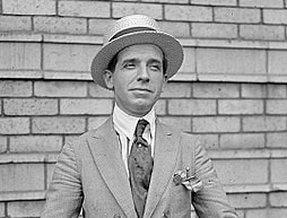Starlet disappears while having the time of her lifeBy R. Marc Kantrowitz
Lawyers Weekly, July 5, 2024 Oct. 7, 1949, fell on a Friday. In Los Angeles, the weather was pleasant with mild temperatures and clear skies. Before she left her house at around 5 p.m., Jean Spangler kissed her young daughter and told her sister-in-law, Sophie, with whom they lived, that she would be home very late, as she was meeting with her divorced husband to discuss child support followed by a night shoot for a movie on which she was working. Although no one ever knows of another’s thoughts and demons, Spangler, 26, was seemingly doing well. After bitter legal battles with her husband, Dexter Benner, she had finally regained custody of her much-loved young daughter, Christine, who had been born five years earlier. The dispute had been brutal, with Benner initially successfully claiming that Spangler’s lifestyle and wild ways made her an unfit parent. The argument appealed to the judge, given Spangler’s employment at 18 as a scantily clad showgirl at Sunset Boulevard’s Earl Carroll Theatre, whose entrance enticingly announced, “Through these portals pass the most beautiful girls in the world.” Read more. Cold as Ice - Unsolved Boston MurdersDiscussion at Lynnfield Historical SocietyRead: "A New Chapter"“Who’s the No. 1 comedian working today?” Appeals Court Judge R. Marc Kantrowitz asks more than a dozen wide-eyed, mostly young law clerks seated around a long conference-room table. A few moments of tense silence follow. This, after all, is a bit less serious of a query than a judge might typically pose to a student clerk, so it takes a few seconds to warm to the task. Read more.
|
About the author
R. Marc Kantrowitz is the most highly published lawyer on state law in the Commonwealth of Massachusetts. He has written numerous books on criminal law, motor vehicle tort law, juvenile law, evidence, and mental health, as well as numerous law-related articles. He also writes a column entitled Law 'n History.
Read more. PodcastsTo listen to the latest podcast from R. Marc Kantrowitz, "Ponzi Scheme: The Notorious Namesake," click here.
For previous podcasts, click here. Old Whiskey and Young Women“Murder and mystery, society, sex and suspense were combined in this case in such a manner as to intrigue and captivate the public fancy to a degree perhaps unparalleled in recent annals.” Ohio vs. Sheppard, 165 Ohio St. 293, 294 (1956).
While this should no longer occur in a criminal trial, it can in a book. And this is the book in which it does. Here, some of the most notorious legal cases in American history are explored. What they have in common is that they titillated, if not repulsed, the entire nation when they first occurred. What they still have in common is that, for the most part, they are today nearly totally forgotten. From the unfair framing for murder of America’s most famous comedian, to America’s first capital case involving an older woman and her much younger lover murdering her husband, to Mad Harry Thaw, the wealthy and mad son of a steel magnate, killing America’s foremost architect over a beautiful woman, all come to life in gripping detail and drama. And meet the real Norman Bates of Alfred Hitchcock’s Psycho, whose mother fixation and real life gruesome crimes far outmatched those of any fictional character. This book brings to life these notorious characters and many more from the rich pages of history. Law 'n HistoryR. Marc Kantrowitz writes a column entitled "Law 'n History" for Massachusetts Lawyers Weekly, the Patriot Ledger, and the sister publications of both. His goal for these articles is to have the reader look at history through a different view. He likes to pick topics about past events that people know little about, himself included. Through his writing he likes to show readers that people are generally the same today as they were hundreds of years ago; the smart, wise and generous vying against the petty, vengeful and stupid. Read more.
|




